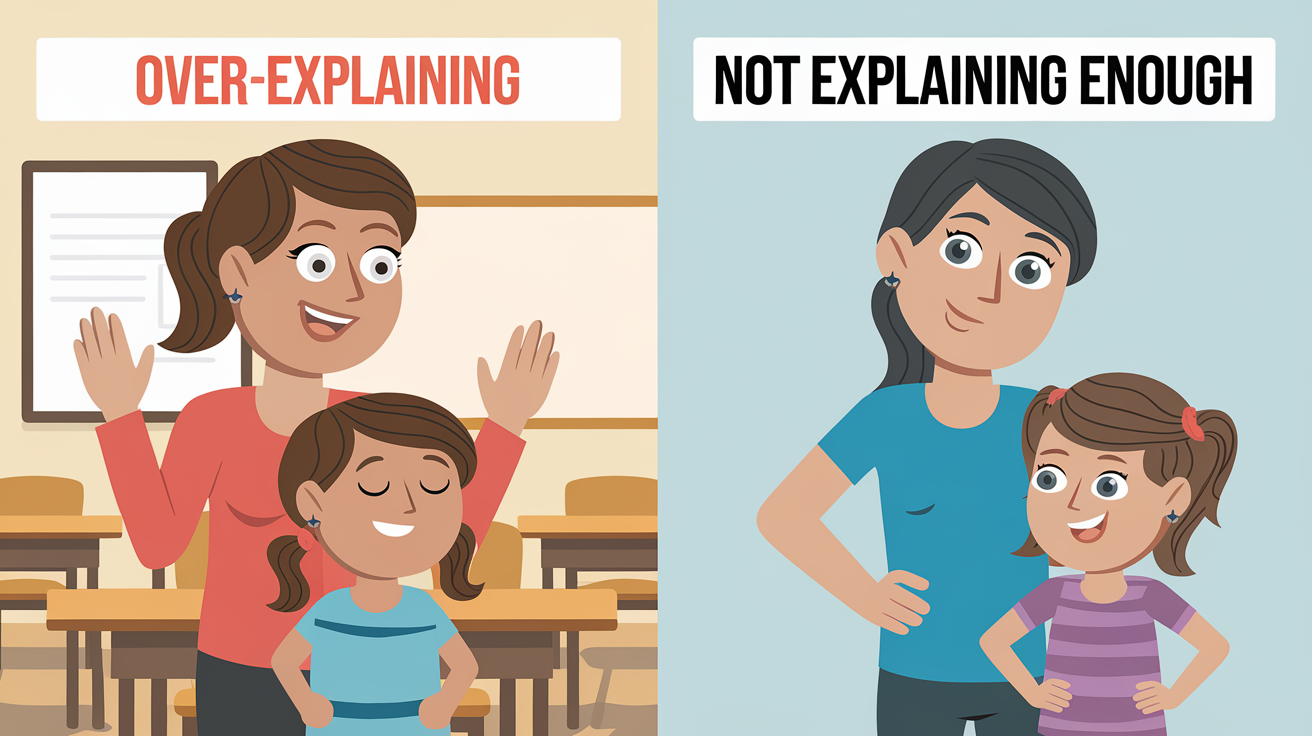Raising a stubborn child can be tough but rewarding for parents. Their strong will may push your patience, but knowing why they act out and how to guide them can make it easier. We’ll look at what makes kids stubborn, how their development and personality play a part, and ways to handle everyday challenges.
Key Takeaways
- Understand the common triggers of stubborn behaviour in children
- Recognise the impact of developmental stages and temperament on a child’s stubbornness
- Explore effective communication techniques to build trust and emotional connection
- Establish clear boundaries and consequences to encourage cooperation
- Utilise positive reinforcement and reward systems to motivate desired behaviours
- Develop strategies to prevent and handle tantrums effectively
- Foster a supportive environment that nurtures the child’s growth and development
Understanding What Makes a Child Stubborn
Dealing with a stubborn child can be tough for parents. But knowing why they act this way is key. Stubbornness in kids comes from different things like triggers, growth stages, and their personality.
Common Triggers of Defiant Behaviour
Children act out for many reasons, like being tired, hungry, or feeling too busy. Setting rules and sticking to a routine can help. This way, you can lessen the chances of them being defiant.
Developmental Stages and Stubbornness
Stubbornness often shows up in toddlers and preschoolers. They’re learning to be independent and test their limits. Knowing this can help parents deal with it better.
The Role of Temperament
A child’s natural personality can make them more stubborn. Some kids are naturally more determined or need more control. Understanding and accepting their personality is important in handling their defiance.
| Temperament Trait | Relationship to Stubbornness |
|---|---|
| Adaptability | Children with low adaptability may be more prone to oppositional defiance when faced with changes or new situations. |
| Persistence | Highly persistent children may be more inclined to stubbornly hold their ground, making it challenging to redirect their behaviour. |
| Intensity | Children with a high-intensity temperament may express their defiance more strongly and vehemently. |
Understanding why kids are stubborn helps parents find better ways to handle it. This way, they can build a strong and loving relationship with their child.
Recognising Signs of Oppositional Defiance
Parenting a stubborn child can be very challenging. To tackle oppositional defiance effectively, it’s key to spot the signs. This part explores the usual signs of stubborn child behaviour and the hurdles parents face.
One key sign of oppositional defiance is a pattern of disobedient and defiant acts towards those in charge, like parents and teachers. Kids with this issue often argue, refuse to follow rules, and try to upset others. They might also blame others for their mistakes and show little remorse or empathy.
- Frequent temper tantrums or angry outbursts
- Deliberate attempts to annoy or upset others
- Refusal to follow rules or instructions
- Blaming others for their own mistakes
- Lack of empathy or remorse for their actions
It’s normal for kids to be stubborn or defiant at times, especially during the toddler and pre-teen years. But if these behaviours are constant, widespread, and disrupt daily life and relationships, it could signal a deeper problem like oppositional defiant disorder (ODD).
| Typical Stubbornness | Oppositional Defiance |
|---|---|
| Occasional refusal to follow instructions | Consistent pattern of defiant, hostile behaviour |
| Occasional temper tantrums | Frequent, intense temper tantrums |
| Ability to recover quickly from conflicts | Difficulty recovering from conflicts, holding grudges |
| Willingness to compromise and cooperate | Unwillingness to compromise or cooperate |
Knowing the difference between normal stubborn child behaviour and the more serious signs of oppositional defiance helps parents. It allows them to handle the challenges better and seek help when it’s needed.
The Impact of Parenting Styles on Child Behaviour
As parents, our way of guiding our children greatly affects their behaviour. Two main styles, authoritative and authoritarian, deeply influence how kids grow and act.
Authoritative vs Authoritarian Approaches
Authoritative parents find a balance between setting rules and talking openly. They let kids share their thoughts but also expect them to follow rules. Authoritarian parents, however, are stricter and don’t allow much discussion.
Studies show kids of authoritative parents tend to be more disciplined and emotionally smart. They also have a better view of parenting styles. On the other hand, kids of authoritarian parents might face more disciplining strategies and could have more behaviour issues.
Finding the Right Balance
Finding the right mix between authoritative and authoritarian parenting is key. Parents should aim to be clear about expectations but also create a respectful and positive reinforcement environment.
“The goal is not to be the perfect parent, but to be a good-enough parent who can provide a secure and nurturing environment for their child to thrive.”
Creating a Supportive Environment
Creating a supportive space for open talk, problem-solving, and emotional learning is vital. This helps kids develop the skills to handle life’s ups and downs. It also strengthens the bond between parent and child, based on trust and respect.
Managing Daily Challenges with a Stubborn Child
Dealing with a stubborn child can be tough. But, with the right strategies, parents can handle these challenges. This helps create a more cooperative home. Let’s look at some practical ways to manage tantrums, set boundaries, and encourage cooperation.
Navigating Tantrums
Tantrums are common with stubborn kids. But, they can be managed with patience and understanding. Stay calm when a tantrum starts. Avoid making it worse.
Acknowledge your child’s feelings and give them a safe space to express them. Use techniques like deep breathing or distraction to help them calm down.
Establishing Clear Boundaries
Setting clear boundaries is key with stubborn kids. Clearly tell them what’s expected and what will happen if they don’t follow it. Stick to it, no matter what.
Involve your child in setting boundaries. Explain why they’re important. Praise them when they follow the rules.
Fostering Cooperation
Getting a stubborn child to cooperate can be hard. But, it’s not impossible. Give them choices and compromises. This makes them feel in control.
Ask for their ideas and listen to their thoughts. Celebrate their small wins. Positive feedback helps a lot in building cooperation.
| Strategies for Managing Daily Challenges | Benefits |
|---|---|
| Navigating Tantrums | Helps de-escalate emotional outbursts and maintain a calm environment. |
| Establishing Clear Boundaries | Provides a sense of security and structure, while promoting cooperation. |
| Fostering Cooperation | Encourages your child to engage constructively and develop problem-solving skills. |
Remember, managing a stubborn child takes patience, consistency, and flexibility. By using these strategies, you can overcome daily challenges and create a more peaceful home.
TO WATCH VIDEO CLICK HERE
“The key to managing a stubborn child is to stay calm, set clear boundaries, and find creative ways to engage their cooperation.”
Effective Communication Techniques
Dealing with a stubborn child needs careful communication strategies. Using active listening, “I” statements, and non-verbal cues helps. These methods build trust, understanding, and lead to positive changes.
Active Listening Strategies
It’s key to really listen to your child. Keep eye contact, repeat back what they say, and ask questions. This makes them feel heard and encourages them to share more.
Using “I” Statements
When dealing with stubbornness, avoid blaming “you” statements. Instead, use “I” statements to share your feelings. Saying “I feel frustrated when you won’t tidy your room” shows your feelings without blaming.
Non-verbal Communication Tips
Your body language and facial expressions matter a lot. Stay calm and use open body language. A gentle, reassuring voice can also help calm situations.
| Communication Technique | Description | Benefits |
|---|---|---|
| Active Listening | Focusing on understanding the child’s perspective by maintaining eye contact, paraphrasing, and asking open-ended questions. | Helps children feel heard and validated, encouraging them to express themselves more openly. |
| “I” Statements | Using “I” statements to express emotions and concerns, rather than accusatory “you” statements. | Avoids escalating tensions and helps the child understand your perspective without placing blame. |
| Non-verbal Communication | Maintaining a calm, composed demeanor, using open body language, and a warm, reassuring tone of voice. | Helps diffuse challenging situations and creates an environment conducive to positive interactions. |
Using these communication techniques helps parents build trust. It leads to better conversations with stubborn children. This way, parents can encourage positive reinforcement and lasting changes.
Setting Clear Boundaries and Consequences
As a parent, it’s crucial to set clear boundaries and consequences for a stubborn child. This method helps create a structured environment. It also teaches the child about respect and being accountable.
Start by talking openly with your child about what’s expected of them. Explain the rules and the reasons behind them. This builds trust and encourages cooperation.
- Clearly communicate your expectations: Tell your child what you expect from them, like finishing homework and being kind to others.
- Establish logical consequences: Choose consequences that fit the misbehaviour, like losing privileges or time-outs.
- Remain consistent: Always stick to the consequences you’ve set. This shows your child you’re serious.
Remember, setting boundaries and consequences is not about punishing. It’s about teaching your child to behave responsibly. This helps them develop important life skills.
“Discipline is not punishment, it’s a learning process.”
Every child is different, so what works for one might not work for another. Be flexible, patient, and ready to change your approach if needed. The aim is to find the right balance between setting limits and supporting your child’s growth.
Positive Reinforcement and Reward Systems
Positive reinforcement is a great way to discipline stubborn children. It focuses on rewarding good behaviour. This encourages kids to do the right thing again. The trick is to use rewards that fit their age and be consistent.
Age-Appropriate Rewards
Choosing the right rewards is key. For young kids, things like stickers or small toys work well. As they get older, praise or extra screen time can be better. These rewards help keep the good behaviour going.
Consistency in Implementation
Being consistent is very important. A clear system where good behaviour is rewarded helps kids understand cause and effect. This predictability motivates them to keep making good choices.
Celebrating Small Wins
It’s vital to celebrate small victories. Recognising progress boosts a child’s self-esteem. It shows them their efforts are valued. This builds a positive relationship between you and your child.
| Reward Type | Younger Children | Older Children |
|---|---|---|
| Tangible | Stickers, small toys, privileges | N/A |
| Abstract | N/A | Praise, screen time, special outings |
Using positive reinforcement and age-appropriate rewards helps with stubborn children. It builds cooperation and a strong, trusting bond.
“Positive reinforcement is the most effective way to encourage good behaviour in children.”
Building Trust and Emotional Connection
Creating a strong bond with a stubborn child is key to good parenting. Trust and cooperation are vital. This section will look at how to build trust, foster cooperation, and tackle parenting challenges.
Trust is a cornerstone of a healthy relationship with your child. Stubborn kids often find it hard to open up. To build trust, listen well, validate their feelings, and show real interest in what they say. Make sure they feel heard and valued.
Cooperation is also crucial. See challenges as opportunities to work together. Encourage your child to share their thoughts and help find solutions. This makes them feel involved and powerful.
Dealing with a stubborn child can be tough, but the right approach helps. Stay calm and patient, even when faced with resistance. Focus on creating a supportive space where your child can freely express themselves.
- Prioritize open and honest communication to build trust.
- Adopt a collaborative approach to foster cooperation.
- Maintain a calm and patient attitude to overcome parenting challenges.
By focusing on building trust, fostering cooperation, and tackling parenting challenges with care, you can deepen your bond with your stubborn child. This leads to a more positive and rewarding relationship.
“The most important thing that parents can teach their children is how to get along without them.”
– Frank A. Clark
| Strategies for Building Trust | Techniques for Fostering Cooperation |
|---|---|
| Active listening Validating emotions Showing genuine interest | Collaborative problem-solving Encouraging child’s input Shared decision-making |
Preventing and Handling Tantrums
Dealing with tantrums in a stubborn child can be tough. But, with the right strategies, you can stop and handle these outbursts. By spotting early signs and using calm-down methods, you can help your child behave better.
Identifying Early Warning Signs
Spotting tantrum signs early is crucial. Look for small changes like facial expressions, body language, or voice tone. Catching these signs early lets you stop a tantrum before it starts, helping your child stay calm.
De-escalation Techniques
Stay calm when a tantrum happens. Use calm-down methods to ease the situation. Acknowledge your child’s feelings and offer empathy. Guide them to a quiet spot to calm down.
Encourage deep breathing or other ways to control their feelings. This helps them calm down faster.
After-tantrum Care
After a tantrum, support and positive words are key. Tell your child you get how they felt and you’re there to help. Do calming activities like reading or playing quietly to help them feel better.
Also, celebrate their small victories and efforts to control their emotions. This encourages the good behaviour you want to see.
FAQ
What are the common triggers of defiant behaviour in children?
Defiant behaviour in kids can be caused by many things. Feeling frustrated, wanting attention, or struggling to show their feelings are common reasons. Knowing these can help parents deal with stubborn or oppositional behaviour better.
How do different developmental stages impact a child’s stubbornness?
Stubbornness often shows up in certain stages, like the “terrible twos” or the tween/teen years. As kids grow and become more independent, they might argue more with parents. This can lead to more defiant behaviour.
What role does a child’s temperament play in their stubbornness?
A child’s natural temperament can really affect how stubborn they are. Kids who are naturally strong-willed or inflexible might be more likely to be defiant. Parents need to be patient and use special strategies for these kids.
How can parents recognise the signs of oppositional defiance in their child?
Signs of oppositional defiance include always refusing to listen, arguing a lot, and being angry or resentful. Spotting these signs helps parents know if their child’s stubbornness is just a phase or a bigger issue.
What is the difference between authoritative and authoritarian parenting styles, and how do they impact a child’s behaviour?
Authoritative parenting sets clear rules but is also caring and responsive. This style is linked to better child outcomes. On the other hand, authoritarian parenting is strict and harsh. It can make kids more defiant and stubborn.
How can parents effectively manage daily challenges with a stubborn child?
To handle daily struggles, set clear rules, use positive rewards, and let the child help make decisions. Consistently enforcing rules and encouraging teamwork can also help manage a stubborn child’s behaviour.
What are some effective communication techniques for building trust and improving interactions with a stubborn child?
Good communication includes listening well, using “I” statements, and paying attention to body language. These methods help build trust, improve understanding, and make interactions better between parents and their stubborn child.
How can parents establish clear boundaries and consequences with a stubborn child?
It’s important to have clear rules and consequences for a stubborn child. Parents should clearly state what’s expected, enforce rules, and stay calm when rules are broken. Tailoring the approach to the child’s age and personality can also help.
What are the benefits of using positive reinforcement and reward systems with a stubborn child?
Positive rewards and praise can really encourage good behaviour in stubborn kids. This approach celebrates small successes, gives consistent praise, and uses rewards to encourage good actions. It’s better than just punishing.
How can parents build trust and emotional connection with a stubborn child?
Building trust and a strong bond with a stubborn child is key. This means spending quality time together, listening to their feelings, and showing empathy. A caring and supportive approach can help overcome challenges and encourage cooperation.
What strategies can parents use to prevent and handle tantrums in a stubborn child?
To prevent and handle tantrums, look for early signs, use calming techniques, and offer comfort after. Staying calm, offering comfort, and rewarding positive behaviour helps keep a supportive environment.
TO SEE MORE TOPICS CLICK HERE


